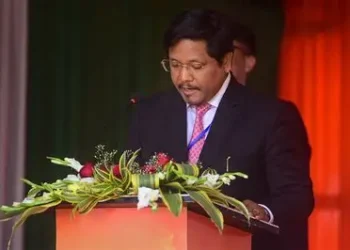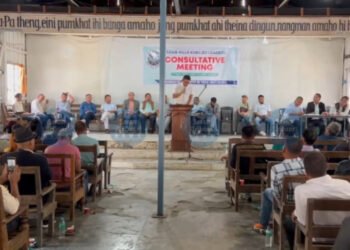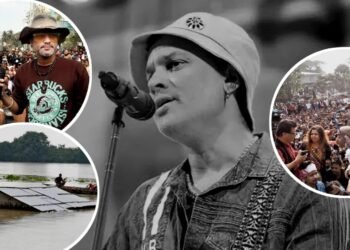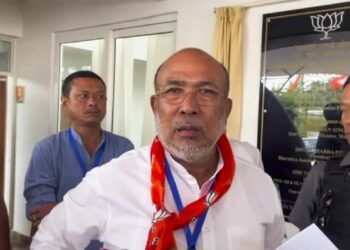Skeletal fragments, a red saree, and ID cards have been recovered from two sites — lending partial weight to a whistleblower’s claims of hundreds of secret burials over two decades.
BY PC Bureau
August 6, 2025: The Special Investigation Team (SIT) probing the sensational Dharmasthala ‘mass burial’ case has made significant but sporadic recoveries across multiple suspected grave sites in the temple town, with skeletal remains, identity cards, personal belongings, and a red saree unearthed at two key locations. The findings lend partial weight to the explosive testimony of a former temple worker who claimed he was forced to bury over 100 bodies — many of them women and minors — between 1995 and 2014.
Site 6: First Breakthrough
The first major breakthrough came on July 31, when the SIT recovered human skeletal remains from Site 6, located in a wooded area near the Netravati River. The remains included bone fragments from the hand, leg, and skull, believed to belong to a male. Forensic teams also recovered personal items: a PAN card, an ATM card, pieces of rope, and part of a laptop or printer. One of the cards bore the name “Lakshmi,” suggesting the possibility of multiple victims.
This marked the first physical evidence in a case that has sent shockwaves through Karnataka, exposing possible long-term abuse and cover-ups linked to a prominent religious institution.
Dharmasthala Mass Burial Case | Multiple bones, skull recovered from Spot 11
On the sixth day of the exhumation process, officials from the Special Investigation Team (SIT) traced skeletal remains on Monday in the forest area near the Netravati bathing ghat, within the… pic.twitter.com/ldsVeUSxmJ
— Deccan Herald (@DeccanHerald) August 4, 2025
Sites 1 to 5: No Remains Found
Before the Site 6 discovery, the SIT had excavated five other locations identified by the whistleblower — a former sanitation worker at the temple. However, no remains or significant materials were recovered from Sites 1 to 5, despite digging up to 6–8 feet deep using both manual labor and earthmovers. Officials say the sites may have been disturbed or misidentified, but activists suspect intentional tampering.
READ: Why Cloudbursts Keep Haunting Uttarakhand’s Fragile Hills
Sites 7 to 10: Continued Blanks
On August 1 and 3, the SIT turned to Sites 7, 8, 9, and 10, but once again came up empty-handed. These areas, located near the highway and river embankments, were thoroughly dug with the help of JCB machines and local laborers. Officials confirmed that soil layers were penetrated up to five feet but yielded no bones, clothing, or artifacts. The team had to contend with heavy rain, which hampered excavation on certain days.
Banglegudde Hillock: Second Site With Skeletal Remains
In a significant twist on August 4, investigators shifted focus to a location above Site 11 — a hillock at Banglegudde — after the whistleblower led them there. This site, roughly 100 feet above ground level, proved to be the second confirmed recovery point. Here, the SIT found a human skull, multiple bone fragments, a red saree tied in a knot, and a pair of male slippers.
The discovery has been described by a senior SIT official as “forensically promising.” The saree and skull have been sent to the Forensic Science Laboratory (FSL) for age and gender determination, while DNA samples are being extracted from the bones.
All skeletal remains and recovered objects have been dispatched to FSL labs for DNA profiling, osteological analysis, and cause-of-death examination. Investigators are also attempting to match the PAN and ATM cards to missing persons reported over the last three decades.
Sources within the SIT said the remains so far appear to belong to adult males, but only laboratory results will provide clarity on identity and potential links to sexual violence — a key allegation made by the whistleblower.
Meanwhile, the SIT is under pressure from victim families and legal advocates to adopt ground-penetrating radar (GPR) to locate deeper or concealed grave sites. Advocate Brinda Acharya, representing one of the families, has alleged an “artificial shortage” of GPR equipment, suggesting institutional reluctance to allow a deeper probe.
The SIT has also obtained Unnatural Death Records (UDRs) from local police stations for the years between 1995 and 2014, in a bid to identify the deceased and trace administrative lapses.
With only two of the thirteen sites yielding skeletal remains, the probe now hinges on scientific validation of the evidence recovered so far. While the whistleblower’s claims remain partially corroborated, officials say further digging and tech-assisted scans will be crucial to uncover the full extent of what some have dubbed Karnataka’s most disturbing cover-up in decades.
Investigation Status (As of August 6):
| Site | Findings |
|---|---|
| Site 1–5 | No remains found |
| Site 6 | 15+ bone fragments, PAN card, ATM card, rope, clothing, laptop/printer |
| Site 7–10 | No remains found |
| Banglegudde Hillock | Skull, bones, red saree, slippers |
The SIT has stated that excavation will continue at the remaining sites and any additional leads provided by the whistleblower. The coming weeks are likely to be crucial as forensic results emerge.













